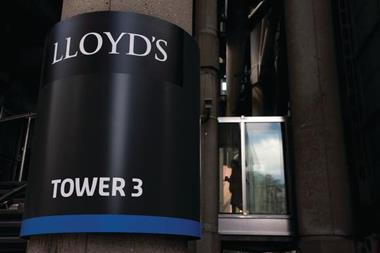Lloyd’s syndicates writing high risk business could be forced to pay larger central fund contributions, under proposals being considered by Lloyd’s.
Lloyd’s chief executive Richard Ward told the Association of Lloyd’s Members (ALM) conference that the corporation was considering setting individual central fund contributions based on the risk profile of each syndicate.
At present, syndicates pay a percentage contribution based on the amount of premiums they write.
The current rate stands at 1%, but Luke Savage, Lloyd’s finance and risk management director, has recommended this be dropped to 0.5%. The proposal is expected to take effect by 2008.
A risk-based contribution system could prove to be contentious. Some senior figures expressed fears that under a risk-based scheme syndicates could be double charged.
Each syndicate is already required to allocate capital to the market depending on its risk profile. The Lloyd’s capital assessment methodology is designed to ensure that each syndicate deposits enough capital to cover the risk that it writes.
But others support the move stating that a syndicate writing high risks and depositing a large amount of capital is in a position to drain more resources than a syndicate which places capital for lower risks.
A Lloyd's spokesperson said: “There are a number of initiatives we are looking at as part of the three-year plan which are aimed at further improving the capital advantages of operating at Lloyd’s.
“We are continuing to investigate how the Lloyd's economic capital uplift can be tailored to match the risk posed by each syndicate to the central fund.”





































